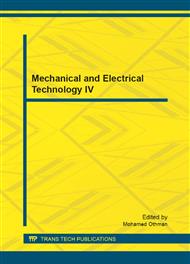p.2653
p.2658
p.2663
p.2667
p.2671
p.2680
p.2684
p.2689
p.2694
Exergoeconomic Analysis of Parallel Polygeneration System with CO-Riched Gas once through
Abstract:
Polygeneration energy systems have been widely accepted because of their superiority over conventional stand-alone plants in energy efficiency and emissions control. Coal-based polygeneration system, especially producing methanol and electricity, will play an important role in Chinese sustainable developing energy system. Researches indicate that the parallel polygeneration system producing methanol and electricity with CO-riched gas once through (PCGOT) has higher comprehensive profitability and higher reliability, but the systemic and objective evaluation to PCGOT is lacking. In this paper, the matrix mode exergoeconomic method is adopted to analyze the PCGOT. Some indices, such as exergy cost coefficient, unit exergoeconomic cost, cost difference and exergoeconomic coefficient, etc. are calculated and analyzed by using exergoeconomics theory. Based on the analysis, the direction for further improvement is pointed out, and the energy flows with different qualities in different parts of system are given the rationally fixed prices. The calculated electricity cost is 0.22RMB/ (kW•h) and methanol cost 1118RMB/t while coal price is 500 RMB/t. In addition, the coal price sensitivity analysis is conducted, the results show that when the coal price reaches 800RMB/t, the electricity cost is higher than Shanxi province average on-grid power tariff 0.304RMB/ (kW•h) in 2011, when the coal price reaches 1000RMB/t, the methanol cost is higher than methanol factory prices 2000RMB/t at present.
Info:
Periodical:
Pages:
2671-2679
Citation:
Online since:
November 2012
Authors:
Price:
Сopyright:
© 2012 Trans Tech Publications Ltd. All Rights Reserved
Share:
Citation:


